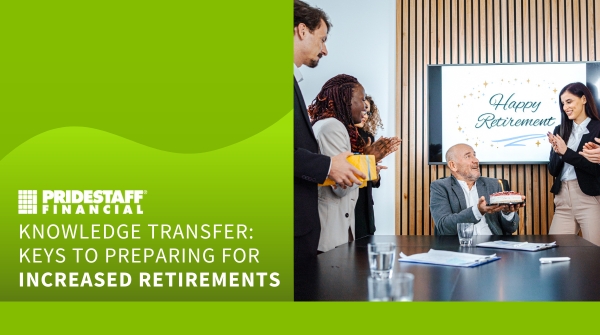Knowledge Transfer: Keys to Preparing for Increased Retirements

The boomers are leaving, and a void is coming if you don’t act now. You know the feeling—your team member possesses critical knowledge, and if that information leaves with them, the repercussions will be felt throughout the organization. For many, the departure of a critical employee triggers a scramble of meetings to capture as much knowledge as possible before they go. Here’s how to build a more effective knowledge transfer program.
What is knowledge transfer:
Knowledge transfer is a systematic and purposeful strategy for capturing critical knowledge from key personnel to store and share within an organization for best efficiency, especially for younger employees. It’s about creating a proactive plan for sharing knowledge today in order to build a more collaborative, aligned, and informed workforce for the future.
There are types of knowledge:
Explicit Knowledge: This is knowledge that is easily shared and transferred through writing or speaking. It is information that can easily be picked up from talking to someone, reading a book, or looking something up online.
Tacit Knowledge: This is knowledge that is hard to transfer or pass along through writing or verbalization. It is developed through a person’s experiences, observations, and insights, and it requires shared activities to transfer or impart that knowledge.
How to implement:
First, start by identifying from whom in the organization you need to gather knowledge (your key players, who it is that the team relies on, or the boomers who might retire soon.) Have them share that information in a way that you can capture, via a portfolio or a “knowledge-sharing onboarding book.” You could build a matrix or spreadsheet to get started. Something that allows you to retain and store that information. Make sure to capture the critical task each person oversees—and who else might have this information. Identify resources you will need to share this information with other teams or to train other key personnel. When it comes to sharing, start by rolling out a mentorship program to allow others to shadow and train one-on-one. Some companies are even doing “simulations”– immersive virtual and augmented reality training experiences to help give employees knowledge in a near hands-on method. Harness modern technology to give hands-on experience in a controlled environment.
Other ways to implement:
Paired work puts together two employees who are both learning a new function or activity. It allows them to work back and forth to bounce ideas off of one another and practice learning together.
E-learning or Instructor learning is a great way to share knowledge while also building an education bank. When you need to transfer knowledge to a larger group of people, designing an eLearning or instructor-led course is a more efficient and standardized approach. E-learning removes traditional communication barriers and creates an on-demand resource for employees to access at their moment of need. Over time, eLearning courses will build a knowledge bank for your organization that houses key processes and information.
PrideStaff Financial has consistently won awards for exceptional client satisfaction. Our highly skilled staffing consultants can help your company prepare for what’s ahead. Contact us today to learn more.



